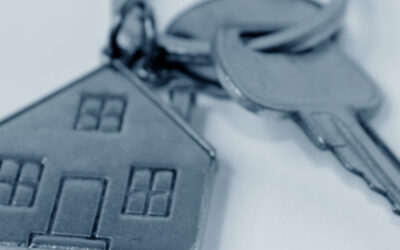Homeowners insurance rates have been increasing every year, with the Consumer Federation of America reporting an average increase of 24% over the past three years. In fact, the U.S. Department of the Treasury reported that homeowners insurance rates increased 8.7% faster than the rate of inflation from 2018-2022.
Several factors are contributing to the rising cost of homeowners insurance, including:
1. An increase in natural disasters
As climate change continues to worsen extreme weather events across the country, states that insurers used to consider to be low risk are now paying much higher rates. This is because increased numbers of fires, floods, tornadoes, and hurricanes are causing damage to homes that didn’t have these problems 15-20 years ago.
For example, the stretch of land running from Central Texas to South Dakota has historically been referred to as Tornado Alley because that has been the area where tornadoes are most frequent. But, according to the U.S. Department of Energy Office of Scientific and Technical Information, tornado alley has shifted East over the last decade or so, bringing an increase in tornadoes to Arkansas, Louisiana, Mississippi, Alabama, Tennessee, Kentucky, and Illinois. This change in weather patterns has contributed to an increase in home insurance rates in these states.
2. Inflation and supply chain issues
Homeowners insurance rates have gone up everywhere since 2020 due to the increased cost of labor and construction materials caused by high levels of inflation and supply chain issues. Because your home insurance rates are largely based on your dwelling coverage, increased costs to rebuild or repair your home are causing insurance prices to increase.
3. Skilled labor shortage
There has been a shortage of skilled construction workers in the U.S. over the last five to 10 years, which has resulted in additional expenses from wages, supply chain problems, and other construction issues; all of these contribute to the rising cost of homeowners insurance.
In fact, the lack of skilled construction workers has become such a serious issue that Congress is trying to help solve it by introducing a bill called the Creating Opportunities for New Skills Training at Rural and Underserved Colleges and Trade Schools (CONSTRUCTS) Act.
4. There are more claims in your area
Insurance rates are determined by multiple factors, including claims history in your area. The more homeowners insurance claims that happen in your ZIP code, the more likely those claims are caused by something specific to your area. Weather-related issues, like fires and floods, are only part of the problem. For example, an increase in theft-related claims might mean that there is more crime in a given neighborhood or ZIP code, which can cause an increase in rates for that area.
5. Insurers are taking fewer risks
As insurance companies choose to stop selling policies in a particular state or region, the ones remaining will often use stricter underwriting criteria and raise rates to reflect both the higher demand and the increased number of risks, resulting in higher homeowners insurance premiums. Florida, California, Louisiana, and other states that have had an increase in weather-related damage have seen multiple insurers become insolvent over the last five years. As a result, insurance companies still operating in those states are likely taking fewer risks and charging higher rates.
6. Reinsurance rates are up
Insurance companies actually have coverage in place to protect them if too many of their customers file a claim at the same time. This risk management tool is called reinsurance, and it helps pay for a portion of claims caused by huge events, like hurricanes and wildfires. Reinsurance rates go up as we face more damage caused by extreme weather, which means individuals will see their rates go up to account for the increase in reinsurance costs.
7. You added something to your property
While some additions to a home can help prevent claims in the future, most actually increase the likelihood of filing a claim. Swimming pools, trampolines, and even pets can be seen as an attractive nuisance, which means they encourage people to come onto your property and potentially injure themselves. And adding something that increases exposure to certain risks, like a fireplace or a wet bar, will also increase the chances that you’ll have to file a claim. As a result, you’ll see an increase in your insurance rates.
8. You filed a claim last year
Insurance rates are all about risk and the likelihood that you’ll file a claim that needs to be paid in the future. Because risks tend to repeat themselves, filing a claim this year is a good sign that you’ll end up filing a claim again next year, too. For example, homeowners in Florida who file a claim for hurricane damage are likely to see more hurricanes in their area in the future, which means insurance companies will account for that and raise your rates at your renewal. If you file a claim, you should expect to see your rates go up the next year.
9. Your roof is too old
The older your roof, the more likely it is to be damaged by weather, and the more likely you are to file a claim. If your roof is around 10 or 15 years old, expect to see your home insurance rates start to go up slowly over time, especially if you live in an area prone to hurricanes, tornadoes, or hail.
10. Your credit score went down
In most states, insurance companies are allowed to use your credit score when helping determine your rates. The reasoning behind this is that, statistically speaking, the higher your credit score, the less likely you are to file a claim, so homeowners with lower credit scores will be charged more for their insurance to account for that added risk. According to the Insurance Information Institute, a person with a below average credit score is more likely to file a claim than someone with an above average credit score, and individuals with the lowest credit scores have losses that are 32.4% higher than average. If your credit score went down in the last year or two, you may see that reflected in your home insurance rates.
How To Save Money on Homeowners Insurance
In addition to choosing an affordable insurance company, there are several steps you can take to help keep your insurance costs low:
- Add protective devices: Safety devices, like a fire alarm that alerts your phone when it goes off or a leak protection system with a water shutoff valve, can help limit the amount of damage to your home in an emergency. Some insurance companies offer discounts for homeowners who install protective devices like sprinkler systems, fire protection systems, and flood venting, so make sure to tell your insurer if you have these devices in your home.
- Review your coverage: With rates rising rapidly, there’s no sense in paying for more coverage than you need. Review your policy annually to see what coverages you may no longer need to help keep your insurance costs low.
- Increase your deductible: Raising your deductible can help offset higher premiums, but make sure you can still afford to pay your deductible if you need to file a claim.
- Bundle policies: Bundling your home and auto insurance is a common way to save money on insurance. Many insurers offer bundling, also called a multi-policy discount.
- Get discounts: There are several discounts that insurers commonly offer to policyholders, including those for bundling and paperless billing. Check with your insurance company to find out what discounts it offers.




